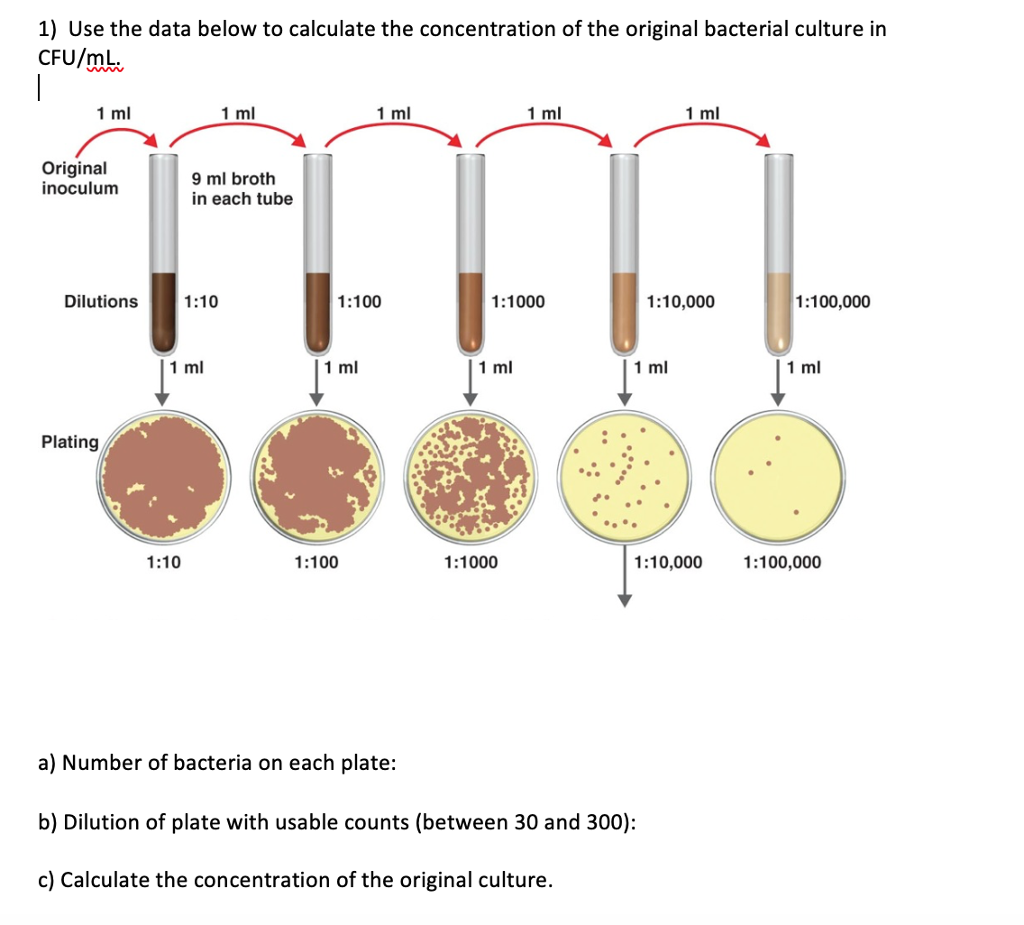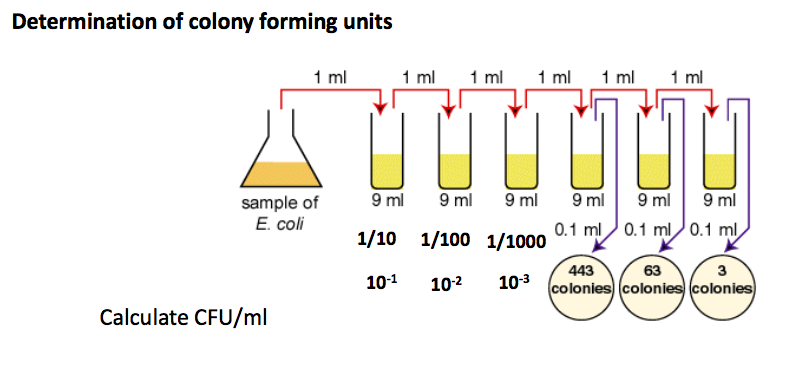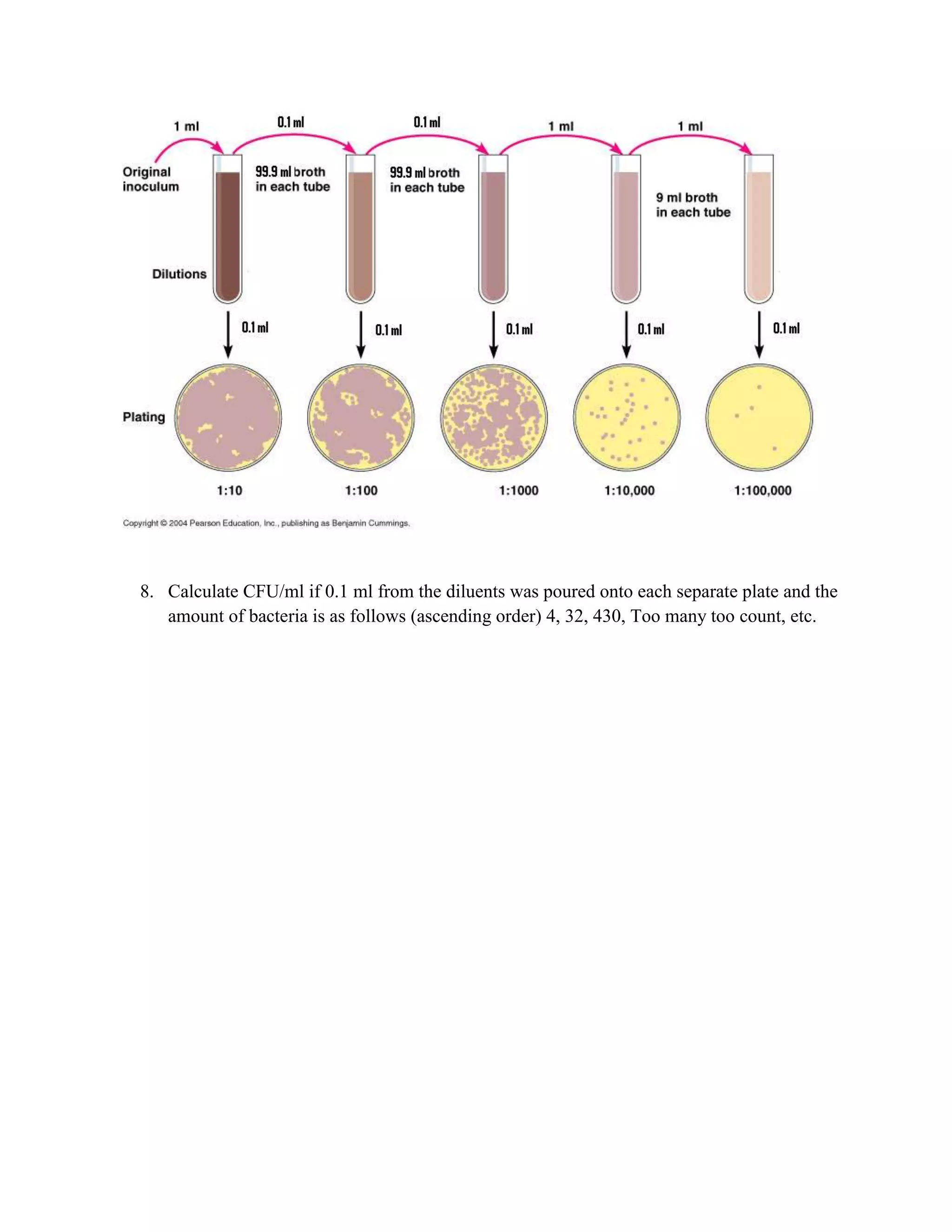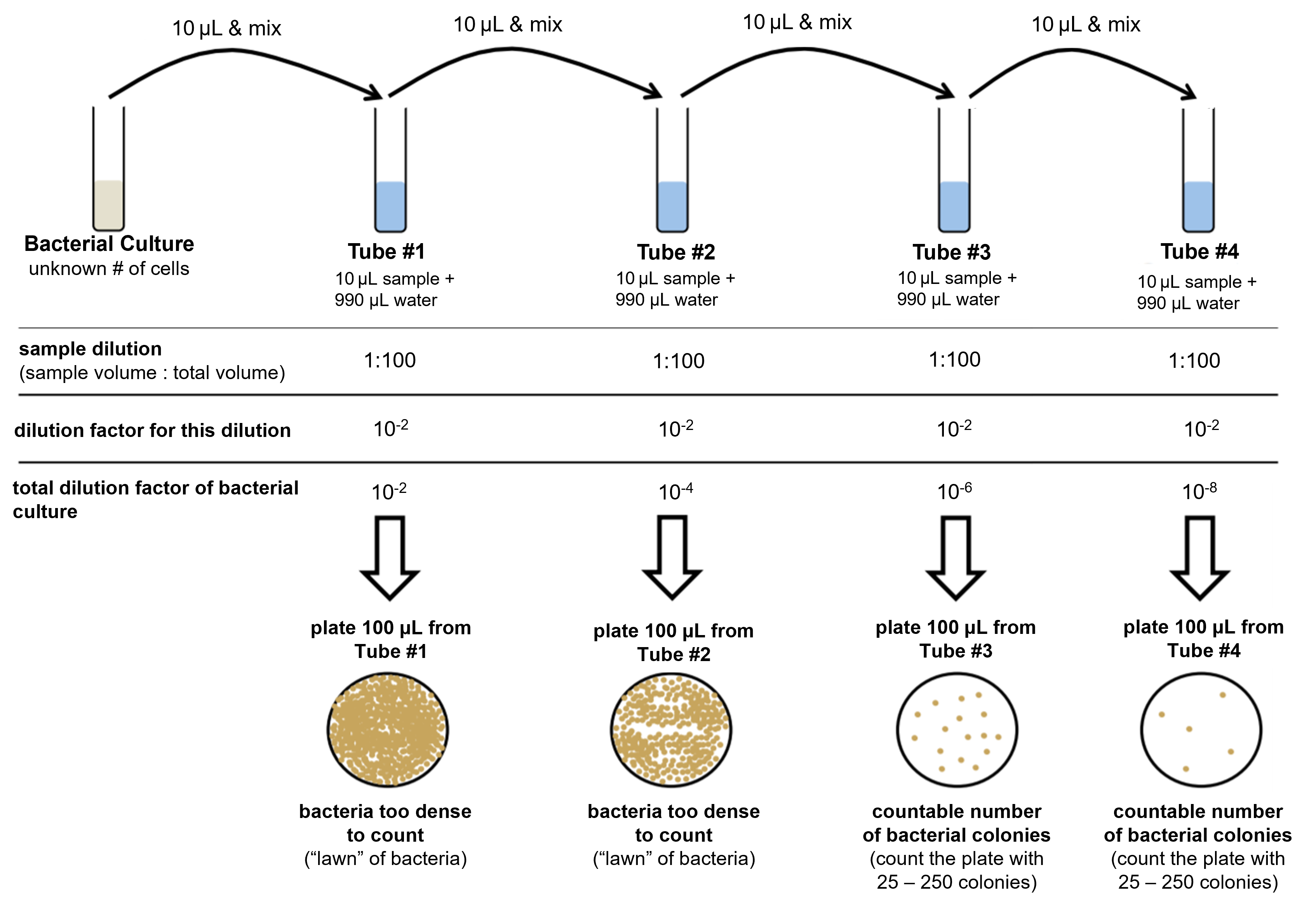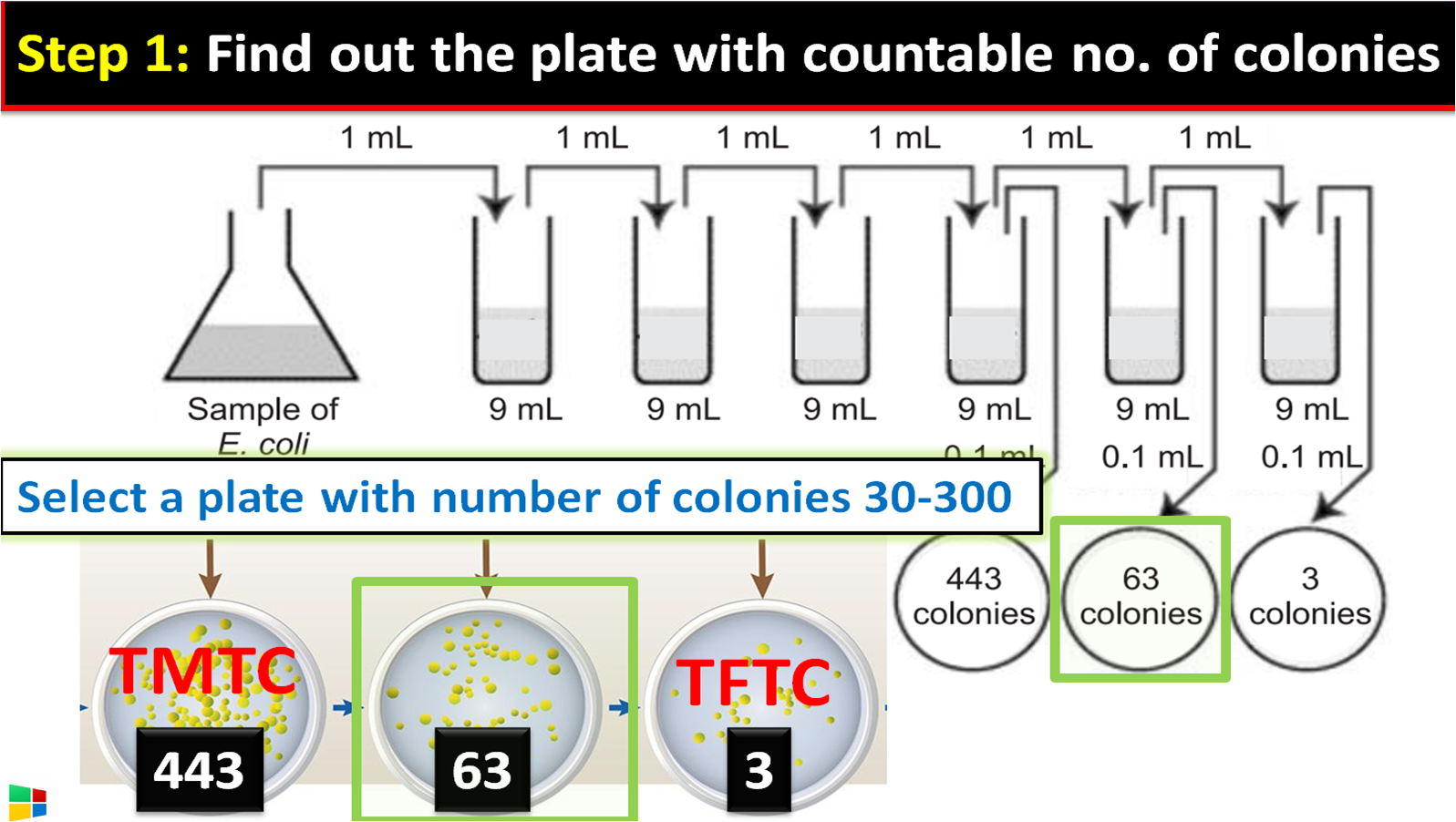LABORATORY PROTOCOL Quantification of ESBL/AmpC-producing Escherichia coli in caecal content and fresh meat samples
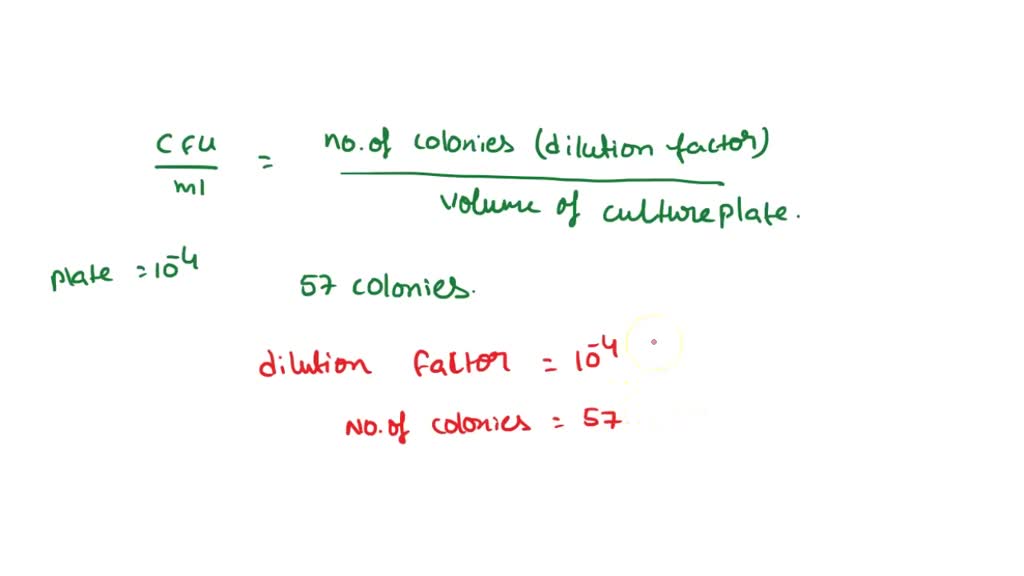
SOLVED: Using the formula: cfu/ml = (no. of colonies x dilution factor) / volume of culture plate In plate 10^-4 there were 57 colonies counted. Experimental process: Pipet 0.25 mL of the
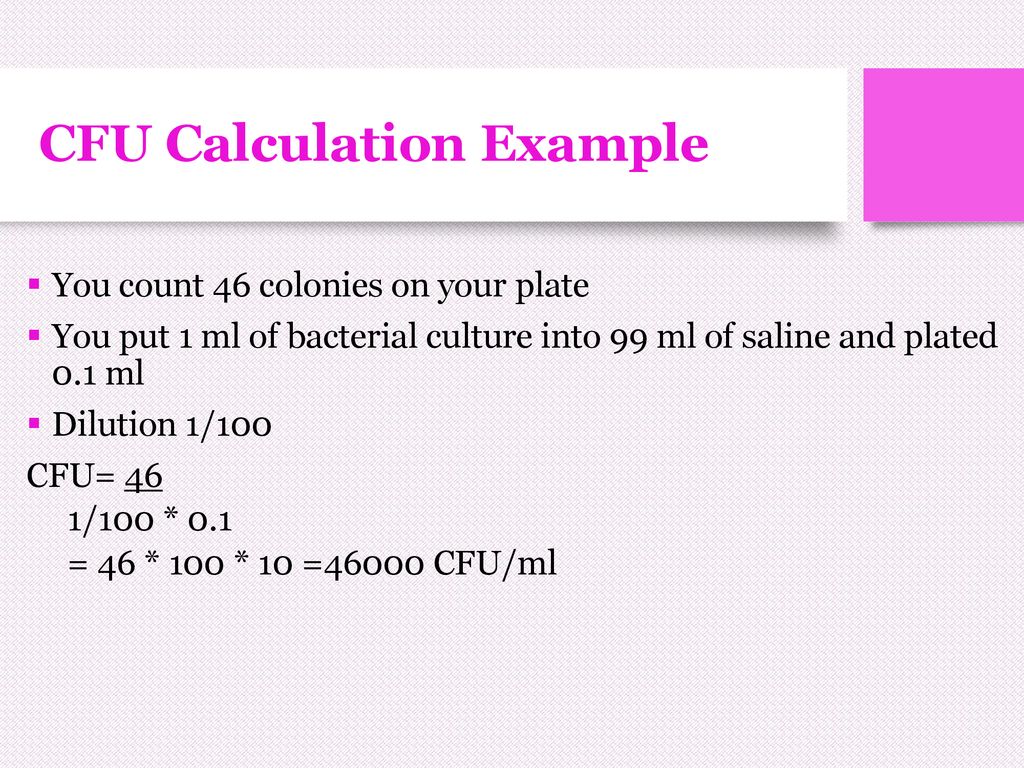
Introduction Many studies require the quantitative determination of bacterial populations. The two most widely used methods for determining bacterial. - ppt download
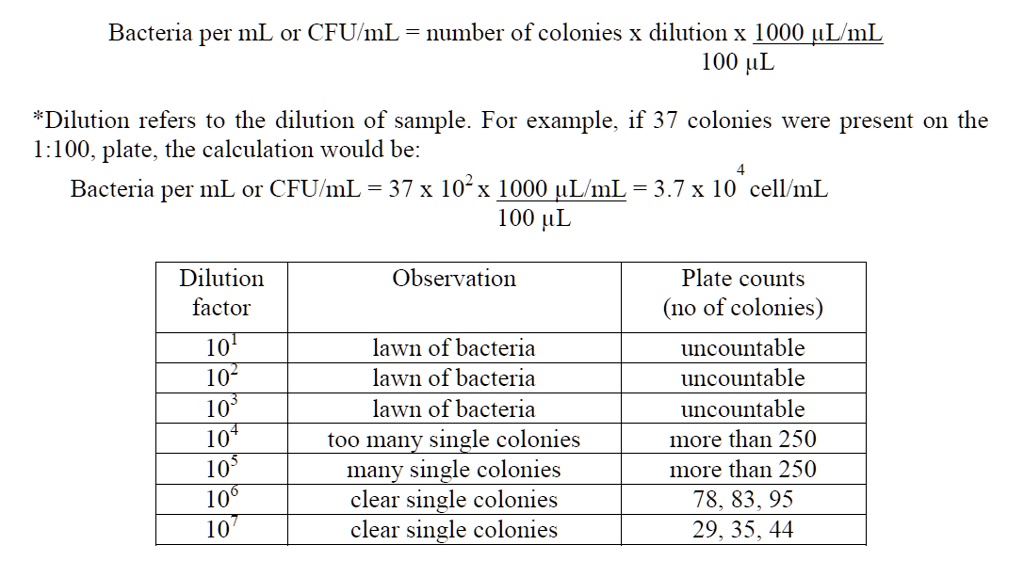
SOLVED: Bacteria per mL or CFU/mL number of colonies x dilution x LOOO LLmL 100 AL #Dilution refers to the dilution of sample. For example, if 37 colonies were present 0 the



